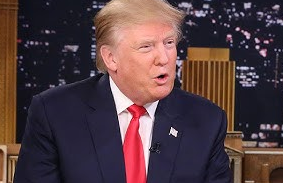The recent political revival of President-elect Donald Trump has reverberated throughout the Democratic Party and left the entertainment industry, particularly Hollywood, grappling with the changes. Once a staple in shaping cultural conversations, late-night television now finds itself floundering as hosts like Stephen Colbert, Jimmy Kimmel, and Jimmy Fallon deal with significant drops in audience engagement and relevance.
Research conducted by the Media Research Center during the intense 2024 electoral season revealed that late-night comedic content heavily leaned toward deriding Trump. From September 3 to October 25, an astonishing 1,463 jokes were aimed at Trump and his running mate Kamala Harris, with a staggering 98 percent targeting Trump himself. In contrast, vice presidential candidate JD Vance was the subject of just 22 percent of the jests aimed at candidates for the second-in-command position.
This excessive emphasis on mocking Trump appears to have backfired, as evident by the notable viewership decline that these shows are experiencing. Critics attribute this trend to a phenomenon dubbed “Trump Derangement Syndrome,” where the continued anti-Trump focus has alienated audiences. Consequently, many viewers are opting to shift their attention elsewhere, leaving once-prominent late-night shows fighting to reclaim their status.
The challenges faced by the Democratic Party post-election, compounded by a vacuum of leadership and potential candidates, serve as a parallel to Hollywood’s plight. The irony deepens as high-profile figures like Alec Baldwin and Cher, who had expressed intentions to emigrate from the country if Trump emerged victorious, have yet to act on their declarations, contributing further nuance to the ongoing political narrative.
The decline in late-night television signifies a broader cultural transformation. With Trump’s reemergence on the political landscape, the realm of media and entertainment is also witnessing significant evolution. For late-night comedy to resonate again in such a divided media landscape, it may need to reconsider its polarization and explore new narratives that foster a connection with a broader audience.





















